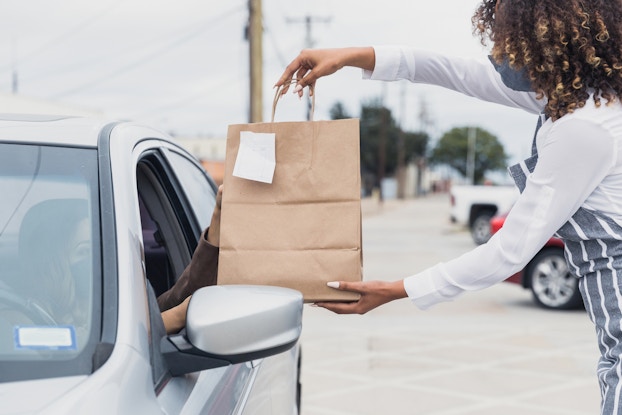
As the COVID-19 crisis first unfolded in the U.S. in early 2020, many businesses modified how they interact with customers. The changes were easy to notice, whether they were essential safety enhancements, a bolstered online presence or curbside pickup.
But as time passes, it’s clear that some of those changes will stick around long after COVID-19 subsides because customers themselves have changed. A report from Talkdesk, for example, shows that the majority of consumers have higher customer service expectations today than before the pandemic; they expect fast and accessible interactions with brands and stores.
With that in mind, here are five customer service trends that will stick around after the pandemic.
Offering customer service 24/7/365
As consumers increase digital interactions with brands and stores, they expect to receive support from them 24 hours a day. In cases where a customer is trying to get help with a site problem, they can be turned off and leave the sale altogether if they can’t get quick help. Raj Patnam, VP of global solutions at ScienceLogic, notes that all types of businesses, including stores and service providers, should have people on call for non-business-hours inquiries.


“Customer service should be an around-the-clock effort because your customers are operating in that exact way,” Patnam told CMSWire. “Anything that brands provide to customers today, especially from a digital service, is 24/7/365.”
Adding texting support
Adding to the push of 24-hour online help is the idea that customers should also have the option to text brands directly when they need assistance. An early 2020 survey from UJET showed that “72% of consumers age 18 to 64 said having the ability to text with a live agent in real-time would improve their overall customer service experience,” indicating that this concept had been percolating even before the pandemic took center stage. The pandemic accelerated this trend, and now major companies like Farmers Insurance text directly with customers using the service Zipwhip.
"We decided to add texting as part of our customer service strategy to keep in contact with customers as quickly and seamlessly as possible," Rebecca Mock, Farmers Insurance executive manager, told Forbes. "A lot of our customers really appreciate that they can just text us — it’s such an easy way to communicate without having to pick up the phone to make a call or mail something back.”
Customer service should be an around-the-clock effort because your customers are operating in that exact way.Raj Patnam, VP of global solutions at ScienceLogic
Building brand loyalty with empathy
One way customer service has notably changed during the pandemic that brands embrace empathy and human connections. This can be as simple as asking how customers are doing or as complex as slowing down complicated interactions to walk customers through step-by-step instructions. Basically, brands try to make customers feel like they are a part of the family, so they stay loyal.
“A positive customer experience comes down to making a customer feel valued in the moment,” Brian Solis, Global Innovation Evangelist at Salesforce, writes in Forbes. “Empathy has always been a key skill for customer service, but it’s become even more essential during an uncharted moment. Seventy-one percent of consumers say businesses that have shown empathy during the pandemic have earned their loyalty. ... Now, service isn’t just about solving problems. It’s about enhancing relationships and enchanting customers.”
Increasing chatbot use for simple but personal interactions
More businesses have begun using “chatbots” during the pandemic, a technology that uses artificial intelligence to answer basic customer questions that don't require human assistance. Some of these bots are getting smarter and can be connected to customer data, so they are providing more personalized service. As these tools reduce the number of inquiries humans need to respond to, expect them to get more popular.
"Chatbots [are] now intelligent in essence with embedded AI, so it's not just providing your customer with automated responses, but also personalizing those responses,” Rohit Mahna, SVP and GM of financial services at Salesforce, told TechRepublic. “So it's aware that maybe if you're chatting about an incredibly important and time-sensitive life event like you've been furloughed, you've got a mortgage payment that you're concerned about, it can be much more of an empathetic chatbot and experience.”
Making curbside pickup more central to the customer experience
While some business-focused pandemic watchers were unsure if curbside pickup would catch on, it has become popular because of the added convenience and a supplement to drive-thrus. This is a relatively simple way to serve customers in a new way and discourages them from choosing a delivery option that will likely cost more.
“Delivery is getting more and more expensive, and that takes a toll,” Lisa van Kesteren, CEO of market research company SeeLevel HX, told Forbes. “In addition to being cheaper, curbside is also more likely to arrive hot at your dinner table because there weren’t two other stops ahead of yours. ... Some customers that never had curbside before have now tried it because of COVID and found that they quite like the convenience. It’s efficient and easy and has less risk of exposure to germs.”
CO— aims to bring you inspiration from leading respected experts. However, before making any business decision, you should consult a professional who can advise you based on your individual situation.
Follow us on Instagram for more expert tips & business owners’ stories.
CO—is committed to helping you start, run and grow your small business. Learn more about the benefits of small business membership in the U.S. Chamber of Commerce, here.







